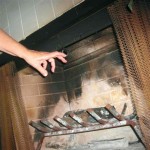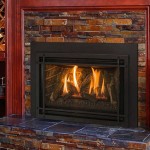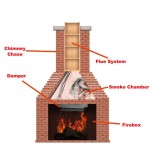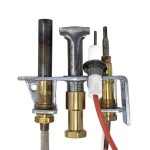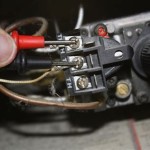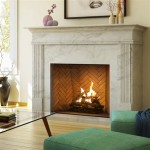Window Air Conditioner In My Fireplace: Is It a Viable Cooling Solution?
The desire for cost-effective and readily available cooling solutions often leads homeowners to consider unconventional methods. One such method involves installing a window air conditioner within a fireplace. While seemingly straightforward, this approach presents a complex interplay of factors related to efficiency, safety, and building codes. This article will explore the feasibility of using a window air conditioner in a fireplace opening, delving into the potential benefits, the considerable drawbacks, and alternative strategies for cooling a room.
The allure of placing a window air conditioner in a fireplace stems from several perceived advantages. Fireplaces, particularly those that are no longer in use, represent large openings to the outdoors. This opening can appear to be a convenient spot for a window air conditioner unit, especially in older homes where window sizes might not readily accommodate standard air conditioner dimensions. Furthermore, a fireplace might be centrally located in a home, suggesting a potential for efficient cooling distribution. The appeal is often driven by a desire to repurpose an existing architectural feature and avoid alterations to window structures.
However, the idea of utilizing a fireplace as an enclosure for a window air conditioner warrants careful consideration. The design and function of fireplaces are inherently different from that of windows, and these differences directly impact the efficacy and safety of integrating an air conditioning unit. Proper installation, sealing, and ventilation are paramount when dealing with any cooling system, and the constraints presented by a fireplace opening create significant challenges in achieving these crucial aspects.
Understanding the Challenges: Sealing and Insulation
One of the primary difficulties in installing a window air conditioner in a fireplace is achieving an airtight seal. Window air conditioners are designed to fit snugly within a window frame, using flexible side panels to bridge any gaps and prevent air leakage. Fireplace openings, on the other hand, are rarely uniform in shape or size. The rough brick or stone construction inherent to most fireplaces makes it almost impossible to create a perfect seal with standard air conditioner installation kits. Any gaps around the unit will allow conditioned air to escape and hot outdoor air to enter, significantly reducing the air conditioner's efficiency. The unit will have to work harder to maintain the desired temperature, leading to increased energy consumption and higher electricity bills.
Furthermore, the chimney itself poses an insulation problem. Chimneys are designed to vent hot gases and smoke, and their construction reflects this purpose. They are typically not well-insulated, meaning that they readily conduct heat. When a window air conditioner is placed in a fireplace, the chimney effectively becomes a large, uninsulated duct connecting the interior of the home to the outdoors. This allows heat to radiate into the room, counteracting the cooling effect of the air conditioner. Even if an airtight seal is achieved around the air conditioner unit itself, the chimney's lack of insulation will compromise the overall cooling performance.
Addressing the sealing and insulation challenges requires significant modification to the fireplace opening. Custom-built panels would be needed to close off the chimney flue above the air conditioner and to create a smooth, uniform surface against which the air conditioner can be sealed. These panels would need to be made of durable, insulating materials to minimize heat transfer. Even with these modifications, achieving a perfect seal remains difficult, and the aesthetic impact on the fireplace itself might be undesirable.
Safety Concerns: Ventilation and Carbon Monoxide
Safety is a major concern when contemplating this type of installation, particularly regarding proper ventilation and the potential for carbon monoxide buildup. Fireplaces are designed to vent combustion byproducts, including potentially lethal carbon monoxide, to the outside. While a fireplace might not be actively used, there could still be residual creosote and other deposits within the chimney that, under certain conditions, could release harmful fumes. Blocking the chimney opening with an air conditioner could disrupt natural airflow and potentially trap these fumes within the home.
Even if the chimney is meticulously cleaned and sealed, the blockage created by the air conditioner can create unforeseen ventilation issues. Homes are designed with specific airflow patterns in mind, and obstructing a major vent like a fireplace can alter these patterns, potentially leading to stagnant air and increased humidity in other areas of the home. This can create an environment conducive to mold growth and other indoor air quality problems.
Furthermore, if the fireplace is still used for occasional fires, the presence of the air conditioner poses a significant fire hazard. The plastic components of the air conditioner are highly flammable and could ignite quickly if exposed to heat or sparks. The resulting fire could spread rapidly through the chimney and into the home. Even if the air conditioner is not directly ignited, the heat from a fire could damage the unit, rendering it inoperable and potentially releasing harmful chemicals into the air.
To mitigate these safety risks, it is crucial to completely and permanently seal off the chimney flue above the air conditioner. This requires professional expertise and the use of fire-resistant materials. Regular inspections should also be conducted to ensure that the seal remains intact and that no harmful fumes are entering the home. However, even with these precautions, the risk of carbon monoxide buildup and fire remains a significant concern, making this type of installation inherently risky.
Efficiency Implications: Unit Size and Airflow
The efficiency of a window air conditioner depends heavily on its ability to circulate air effectively and to remove heat from the room. Placing the unit in a fireplace can significantly impede airflow and reduce its cooling capacity. Fireplace openings are often recessed, which can restrict the flow of air both into and out of the air conditioner. This means that the unit will have to work harder to cool the room, leading to increased energy consumption and decreased cooling performance. The recessed placement also creates a localized hot zone around the back of the air conditioner, potentially overheating the unit and shortening its lifespan.
Furthermore, the size of the fireplace opening might not be ideally suited for the size of the window air conditioner. Using a unit that is too small for the space will result in insufficient cooling, as the air conditioner will be unable to effectively remove heat from the room. Conversely, using a unit that is too large can lead to short cycling, where the air conditioner turns on and off frequently, which is inefficient and can damage the unit over time.
Determining the appropriate size of air conditioner for a fireplace opening requires careful calculation of the room's square footage, insulation levels, and sun exposure. A professional HVAC technician can conduct a load calculation to determine the optimal cooling capacity for the space. However, even with the correct size, the restricted airflow and potential for heat gain from the chimney will still negatively impact the air conditioner's efficiency. In most cases, a window air conditioner placed in a fireplace will be less efficient than a unit properly installed in a window.
In summary, while the idea of using a fireplace as a housing for a window air conditioner might seem like a convenient solution, the challenges associated with sealing, insulation, safety, and efficiency make it an impractical and potentially dangerous option. The costs associated with modifying the fireplace to accommodate the air conditioner, combined with the reduced cooling performance and increased energy consumption, often outweigh any perceived benefits.

How To Keep Your Place Cool With A Single Window Air Conditioner Forbes Home

The Goal Disguise A Window Unit Air Conditioner Addicted 2 Decorating

How To Burglar Proof Your Window Air Conditioner Unit

How To Install A Portable Air Conditioner 10 Steps

Window Air Conditioners Vs Ductless Mini Split Cooling System Forbes Home

How To Install A Window Air Conditioner Sylvane

Startup Promises Window Mounted Heat Pump By 2024 Greenbuildingadvisor

The Goal Disguise A Window Unit Air Conditioner Addicted 2 Decorating

How To Install A Window Ac Unit Wall Installation Guide

How To Choose The Best Window Air Conditioner Lowe S


